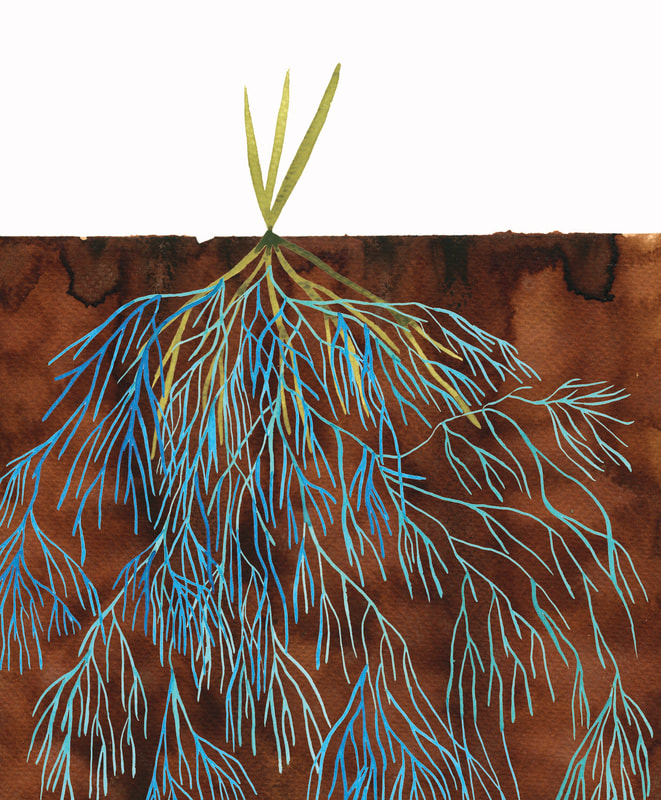Symbiosis
|
The evolution of cooperation has been the prerequisite for life on Earth, as we know it. Cooperation among individuals of the same or different species has shaped the evolution of organisms in all biological levels. Similarly, cooperation has played a key role in the major transitions in life such as evolution of multicellularity.
Benefits gained through cooperative interaction can sometimes lead to the evolution of symbiosis which is a close intimate biological interaction between two different organisms. Symbiosis has, for example‚ enabled organisms to occupy habitats where they would not survive so well without each others. When a symbiotic relationship benefits both parties, it is called mutualistic. However, symbiosis is not restricted only to mutually positive interactions; it can be one-sided (commensalism) benefitting only one of the partners while not affecting the other one, or parasitic with negative impact on the other partner while the other one benefits. Whether symbiotic relationships are positive or negative can also change depending on the conditions organisms experience. For example, in nitrogen-rich soil that has very little phosphorus the plant (Big Bluestem (Andropogon gerardii)) benefits from fungi partners, whereas in soils with little nitrogen the fungi partners can decrease the plant growth changing the symbiotic relationship from positive to negative. Materials on this page will introduce you to the cooperation evolved between plants and fungi. Whilst engaging in the exercises, you learn about the benefits of cooperation and also learn what is a mycorrhiza. Current understanding is that the symbiosis between plants and fungi enabled plants to move to land from aquatic environments. The fossil records show that plants did have mycorrhizae already 400 million years ago. The first plants growing on land did not have roots, so it is assumed that the plants received nutrients from the ground via fungal network. |
|
– – – – – – – – –
Games and exercises: 1. Mystery of the mycorrhizae - memory card game A memory card game where you learn about the symbiotic relationship between trees and fungi that occur in boreal forests in Northern Europe. 2. Knitted mycelia or Mycorrhizal networks Two options for making a collective, spatial art installation by finger-knitting, while learning about mycelia and mycorrhizae. 3. Underground networks Painting exercise where participants are encouraged to imagine connections happening in the soil under our feet. 4. Undiscovered mycorrhizal fungi Playful exercise where participants imagine species of undiscovered organisms from the kingdom of fungi. |
|
|
|
– – – – – – – – –
Vocabulary: a) Mycelium (pl. mycelia) is the vegetative part of the fungus, consisting of strands of hypha. b) Hypha (pl. hyphae) is a thin filament in the mycelium. c) Mycorrhiza (pl. mycorrhizae) is the system of fungus' mycelium joined together with tree roots underground, that enables them the change of nutrients and sugars. – – – – – – – – – – – – – – – – – – References: * Johnson N.C., Wilson G.W.T., Bowker M.A., Wilson J.A. & Miller R.M. 2010. Resource limitation is a driver of local adaptation in mycorrhizal symbioses. PNAS 107: 2093–2098. Available: www.pnas.org/cgi/doi/10.1073/pnas.0906710107. * Vestberg M. & Timonen S. (toim.) 2018. Rihman kiertämät – Kasvien ja sienten erottamaton elämä. Forssa Print. * Walder F. & Van der Heijden M.G.A. 2015. Regulation of resource exchange in the arbuscular mycorrhizal symbiosis. Nature Plants 1: 1-7., doi:10.1038/NPLANTS.2015.159. More resources and inspiration: Websites: * British Mycological Society Animation: * Mycorrhiza – what connects fungus and plant. Deggendorf University of Applied Sciences on behalf of Bavarian Forest National Park. Copyright Nina Pötschke and National Park Administration Bavarian Forest. Books: * Fungarium – Ester Gaya and Katie Scott. Templar Publishing in association with RBG Kew, 2020. * Merlin Sheldrake. Entangled Life. Random House, 2020. – – – – – – – – – |
|
– – – – – – – – –
Our materials are licensed under the Creative Commons Attribution-ShareAlike 4.0 International License: http://creativecommons.org/licenses/by-sa/4.0/. It means you can use our materials freely, but please remember to always credit our work and mention us whenever you are sharing contents of our project online: Instagram: @evolution_in_action, Facebook: @evoluutiopajat, Twitter: @EvoWorkshops. If you use our materials in teaching, we are happy to hear greetings and feedback. You can tag us on social media or send us an email: [email protected] Evolution in Action logo: jpeg, eps |






